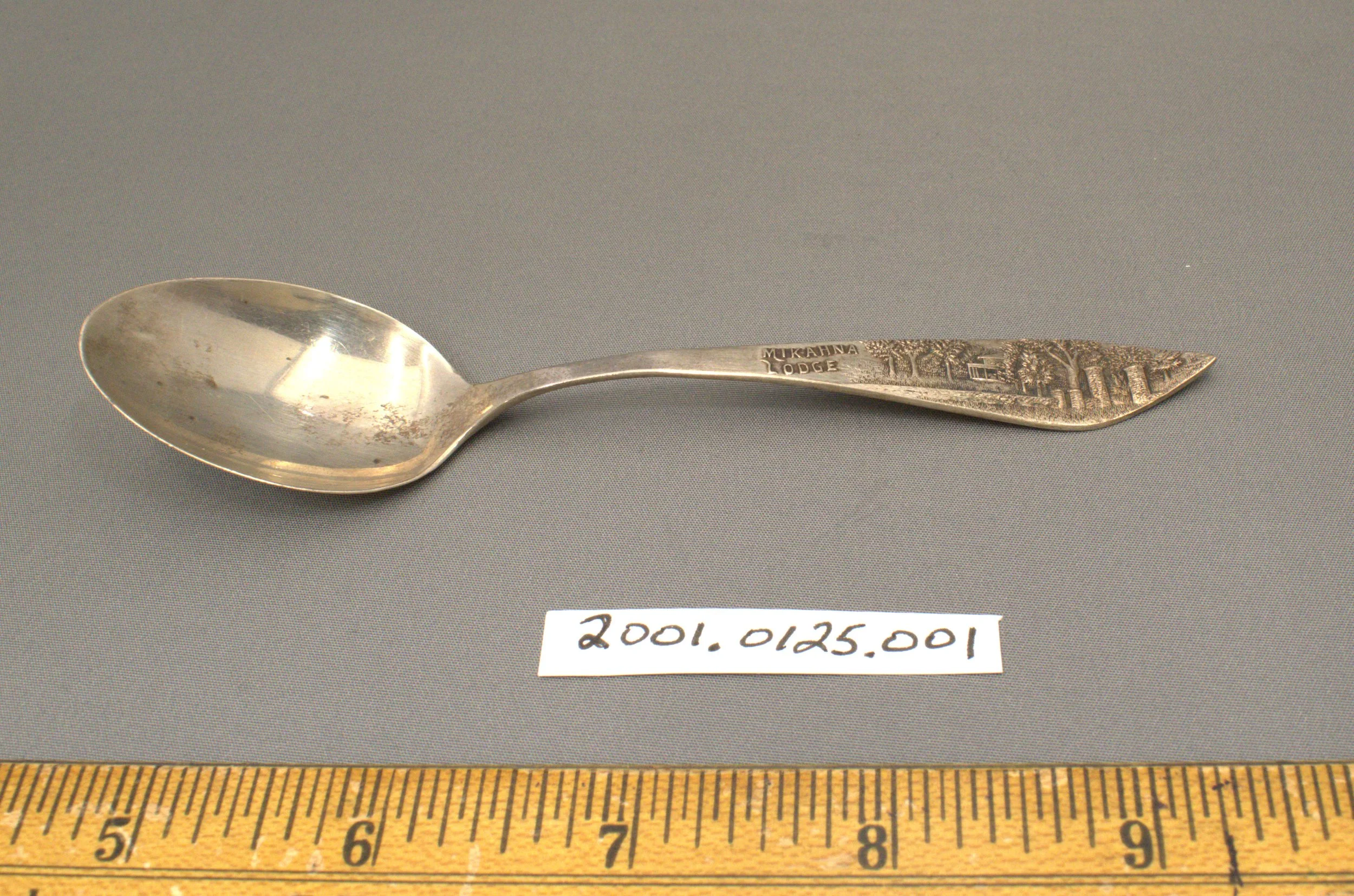Meet the Kiewels
the liquor connection
Irving and Mary Woodbury sold the house in 1936 to Charles Kiewel, then moved to Florida, where they lived until they died in 1957 and 1954, respectively.
Charles Kiewel grew up in Crookston, Minnesota, and was involved with farming, banking, and beer brewing. His first brewery was the Kiewel Brewing Company of Crookston, but by the 1930s, he was the president of Grain Belt Brewing in Minneapolis. He and his wife decided to buy the Caswell house in Anoka as more of a summer home rather than their permanent residence. They only lived in the house part-time.
Sterling Silver Spoon. "MIKAHNA LODGE" Embossed on handle. Embossed picture of trees and entrance to "Woodbury House." The photograph shows 1905 date of lodge. It is possible that the Lodge never existed. The spoon was made as a promotional item to be used for investment purposes. The house has always been used as private residence, the "Lodge" never became reality in this location.
From a conversation with Barb Scottston, 7 July 2014 — Barb's mother, Fern Johnston, told Barb the story of the spoon with MIKAHNA LODGE on it when she gave the spoon to Barb. The Johnstons owned and lived in the Woodbury House from 1957 to 1985. Fern kept the spoon in a drawer in the dining room with other odd pieces of silverware, things that she wanted to keep, but that didn't match the rest of her tableware. When Barb was an adult and setting up her own house, her mother gave Barb the spoon since it had "her house" on it. The story that went with it was that after the Kiewels decided they were going to go back to Thief River Falls, their son took over the house (ca. 1953). He "kind of" lived there, he probably had another house and was continuing to use the Woodbury house as more of a summer home like his parents did. He was approached by some "investors" who wanted to develop the property into a kind of resort lodge that offered special meals, exclusive rooms to stay in, special activities, etc. Barb believed the would-be developers had a very limited number of these spoons made and gave them to people, probably people who they thought might help them or benefit from the property becoming a business. Souvenir spoons were past their peak of popularity, but still popular, especially with the roadside tourist attractions that were so in vogue in the 1950s. The Woodbury House property was located on Hwy 169 (aka Ferry Street) which was a major route for tourists and weekend travelers going to northern Minnesota, so the location would have been perfect for such an enterprise. Barb believed that the Kiewel son who had the property decided that he didn't want the place developed into a tourist attraction or lodge or whatever, he wanted it to be used as a home, so he refused to sell it to the developers. That was when her parents bought the house and moved in.

